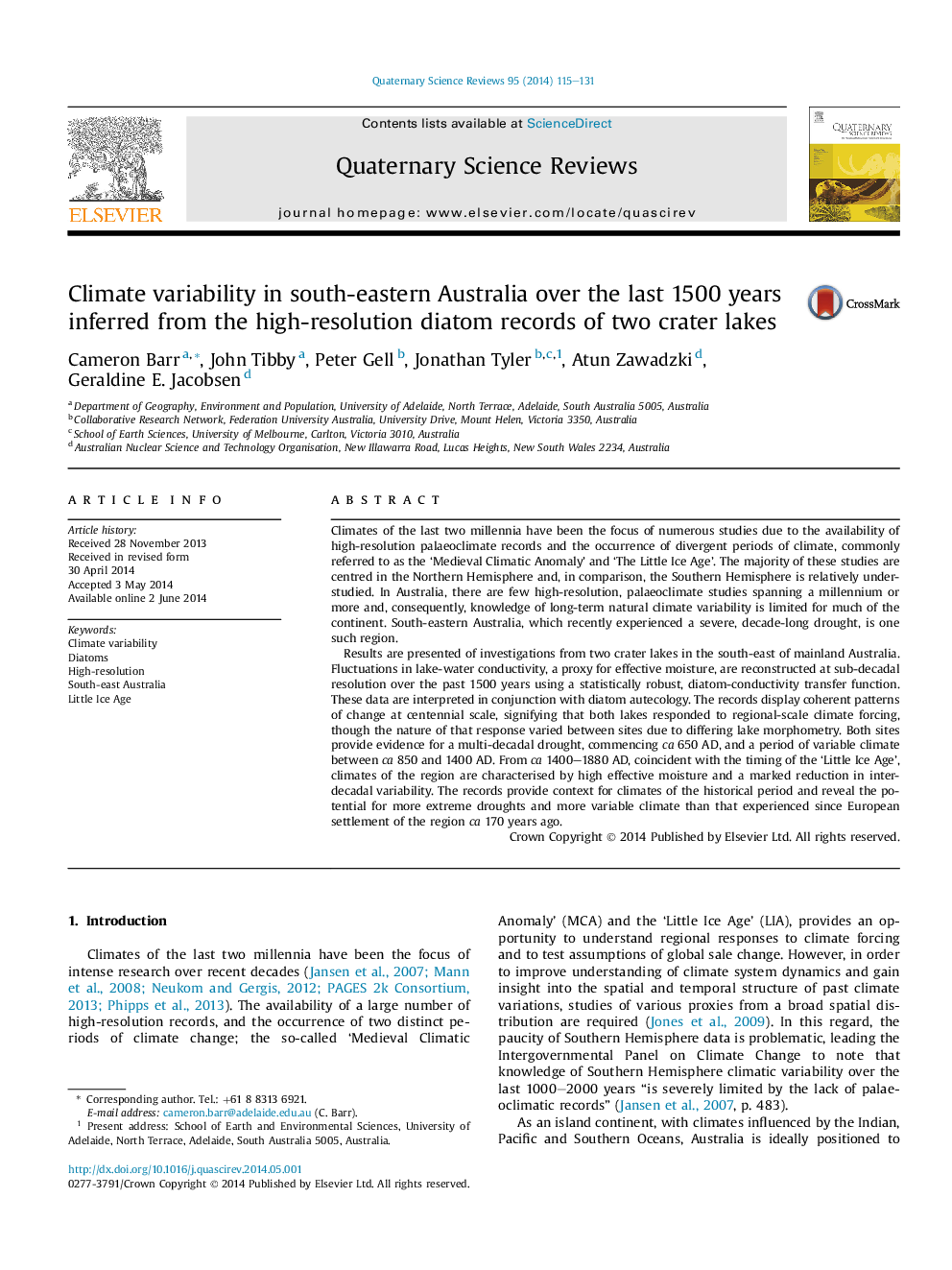| Article ID | Journal | Published Year | Pages | File Type |
|---|---|---|---|---|
| 6446204 | Quaternary Science Reviews | 2014 | 17 Pages |
Abstract
Results are presented of investigations from two crater lakes in the south-east of mainland Australia. Fluctuations in lake-water conductivity, a proxy for effective moisture, are reconstructed at sub-decadal resolution over the past 1500 years using a statistically robust, diatom-conductivity transfer function. These data are interpreted in conjunction with diatom autecology. The records display coherent patterns of change at centennial scale, signifying that both lakes responded to regional-scale climate forcing, though the nature of that response varied between sites due to differing lake morphometry. Both sites provide evidence for a multi-decadal drought, commencing ca 650 AD, and a period of variable climate between ca 850 and 1400 AD. From ca 1400-1880 AD, coincident with the timing of the 'Little Ice Age', climates of the region are characterised by high effective moisture and a marked reduction in inter-decadal variability. The records provide context for climates of the historical period and reveal the potential for more extreme droughts and more variable climate than that experienced since European settlement of the region ca 170 years ago.
Related Topics
Physical Sciences and Engineering
Earth and Planetary Sciences
Geology
Authors
Cameron Barr, John Tibby, Peter Gell, Jonathan Tyler, Atun Zawadzki, Geraldine E. Jacobsen,
